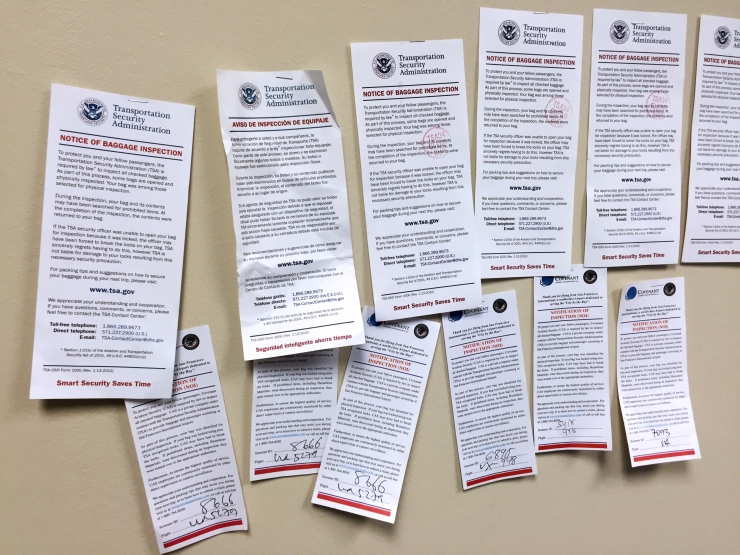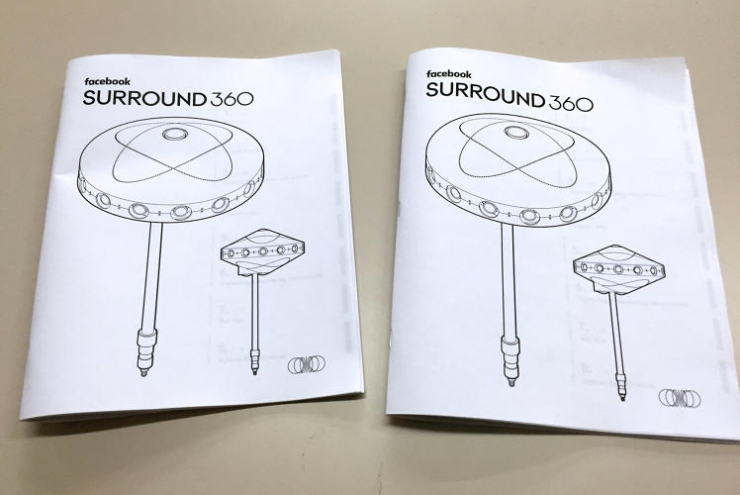
Yesterday, Facebook launched its own open-source 360-degree 3D camera Surround 360. Here we come to reveal the birth of this mysterious "flying saucer".
Facebook has a mysterious laboratory near the Silicon Valley headquarters. The lab has posted 15 notes on the door, and this office is the birthplace of the open source 360-degree 3D camera owned by social giants.
So what do these notes have on paper? Is it an idea for R&D personnel? Not! These notes are from the US Transportation Security Administration (TSA). What was written above is the "baggage inspection notice." This also reflects the fact that Facebook's 360-degree camera team often flies around the world to test, as a bunch of geeks, presumably their luggage is also a random mess.

In fact, in March this year, Facebook showed off the camera named Surround 360. Today's special conference is to announce the open source design of the camera. Facebook hopes that the addition of more teams can greatly reduce the price of the product and make it a weapon for movie shooting. Artists who are willing to accept the challenge are very appreciative of Facebook's approach, but first they need to quickly iterate on Surround 360.
The team behind this project is passionate about this work. They hope that the high-end 360-degree camera system they have built will inspire the artists around the world to create new visual languages ​​and advance the film art level.
“We started right on the road and it was exciting,†said Brian Cabral, who is the project manager responsible for the project. "This is definitely a rare opportunity for life. We caught up with the beginning of the media revolution."
The Surround 360 is very much like a flying saucer. It has 17 synchronized cameras on its body, and each camera can shoot 8K pictures. It can shoot 2 hours of 360-degree video continuously at a rate of 60 frames per second, but it is also very expensive, and the price of 30,000 US dollars is probably not affordable to ordinary users. In addition, Surround 360's compatibility is not bad. The video it shoots can be played on Samsung Gear VR and Oculus Rift platforms.
"This guy is really amazing and important," said Jeffrey Greller, a VR expert at William Morris Entertainment. "To be honest, it's like a magician's prop, but this show is a secret rather than a secret. From a professional point of view, I can't wait to see the popularity of Surround 360 in the market because it pinpoints the entire media. Pain points in the industry."

In addition, the design of Surround 360 is also worth mentioning. The parts that make it are easily available in the market. As long as there is a big supermarket around your home, you can get its hardware. At the same time, Facebook also released a dedicated software that can seamlessly stitch photos together. Developers can read the camera's hardware and software design for free, and Facebook even announced the Surround 360 code on GitHub.
In fact, with the development of VR technology, various manufacturers have their own 360-degree camera systems, high-end such as Jaunt VR, Nokia, and even Google has its own products. At the low end, there are Ricoh Theta S and Samsung Gear 360. The advantage of Facebook's system is its clarity and ease of use. In addition, the open source features of this system are also of great interest to many people.

"It's not difficult to shoot VR video, but post-production is very complicated and time-consuming," said Armando Kirwin, executive producer of VR content developer Vrse. "In fact, an ordinary project will take 2-3 months. The advantage of Surround 360 is that it can post-process VR content directly in the machine, greatly reducing the post-production time. In addition, it is also in terms of resolution. This leads to a lot of worries for creators. They just need to concentrate on content creation."
Facebook does not want to involve the camera hardware businessAt the Facebook F8 Developer Conference in March this year, the company’s chief product officer positioned the main goal of Surround 360 as "accelerating the popularity of the 360-degree camera system. Developers can continue to improve it, and photographers can create it." Take advantage of Surround 360." Facebook made it an open source project because "they didn't want to involve the camera hardware business." However, Facebook is very active in promoting technological advancement.
"We caught up with the best times, and all the hardware technologies and algorithms just hit it," Cabral said. "With VR and VR capture, we have seen the future of media development."
Prior to joining Facebook in 2014, Cabral was the Vice President of Engineering at Nvidia. He is an imaging generation expert for the next generation and has been responsible for the development of such algorithms.
Speaking of the office next to the headquarters, Cabral said that they need extra space, so this high ceiling office is the best choice.

Throughout the development of the camera, Facebook's team constantly shuttled between mathematics and reality, and it was this spirit that accelerated their development.
Open sourceWith regard to the issue of open source, Cabral believes that this move is intended to allow more people to join and accelerate the convergence of ideas. "In addition to the team's staff, we also hope that academics and professional videographers can offer advice and suggestions."
They thought about open source from the very beginning, because Cabral and his team think this is the fastest way to promote the revolution in media technology.
In addition, Facebook does not dislike other people borrowing their own camera designs. "It's great. It's a good idea to stop people from embracing new technology. Facebook is encouraging everyone to re-create it on the basis of Surround 360."
At the same time, Facebook's team hopes everyone will not stick to the existing Surround 360 design. You can build a cheap version on top of it, and you can continue to improve Surround 360 performance to make it bigger, faster and more powerful.
In addition to open source the Surround 360 hardware system, Facebook's team is very careful to prepare for the developers with the matching computer and storage system, in addition, the control camera and post-production software is not absent, with powerful software blessing, The camera can seamlessly stitch photos of 17 cameras directly in the background.
Although the price reached 30,000 US dollars, but Facebook still closely lists the shopping list and assembly order, anyone who wants to try their skills can build their own Surround 360.

Cabral said that when they developed Surround 360, they always followed a simple guideline. Even a rookie in the field can follow the instructions step by step to get the camera done. In order to test the effect, Carbal also specifically recruited a Facebook employee and gave him the parts and instructions. It took only four hours and the rookie completed the assembly of the Surround 360.
If you spend a lot of money developing Surround 360, but don't make a profit, then what exactly is Facebook doing to develop this system?
“As an old saying, our mission is to connect the world. Facebook wants to be a bond between you and your family, friends, and cares,†said Cabral. "And sharing is an important factor in consolidating connections. Surround 360 is trying to bring users into an immersive new sharing model. What is the next step? I think Surround 360 is the logical next step."
Via fastcompany